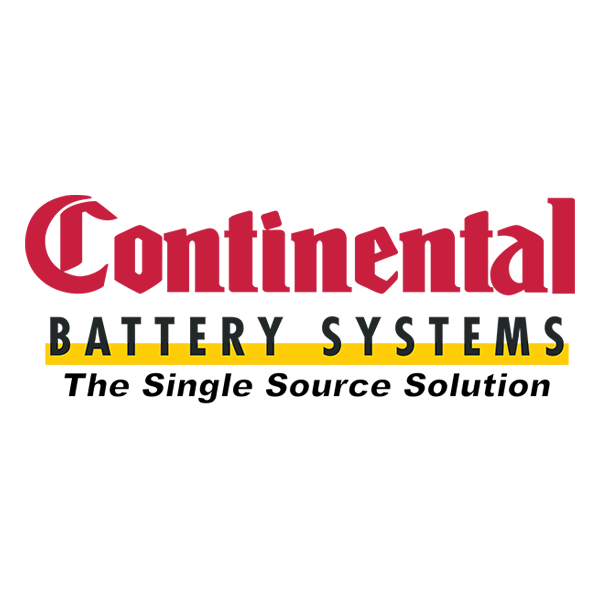Frequently Asked Questions
Get the Answers to your Battery Questions
CCA stands for Cold Cranking Amps. This is the amount of power supplied by your battery when starting your vehicle on a really cold day (0 degrees Fahrenheit). The definition by Battery Council International (BCI) is: The discharge load, in amperes, that a fully charged battery, at 0 degrees Fahrenheit, can deliver for 30 seconds and maintain a voltage of 1.2 volts per cell or higher.
CA and HCA stand for Cranking Amps and Hot Cranking Amps. These ratings are obtained under the same load as CCA, but are typically tested at 32ºF and 80ºF respectively. These ratings may be useful for people not living in cold weather climates. They are also sometimes referred to as MCA, or Marine Cranking Amps.
RC stands for Reserve Capacity. The BCI defines this as the number of minutes that a fully charged battery at 80ºF can be continuously discharged at 25 amperes and maintain a voltage equal to or higher than 1.75 volts per cell.
Positive grid corrosion. This is a natural occurrence over time. However, it is accelerated by operating in an extremely hot climate or by overcharging. Overcharging can occur due to a malfunction in a part of a vehicle's electrical system.
Vibration is another major reason for battery failure. Excessive vibration can cause plates to become damaged, accelarating corrosion. AGM batteries are much more vibration resistant.
Hot weather. While most of us have grown up thinking that cold weather is the worst weather for a battery, the fact is that your vehicle is simply harder to start on very cold days. This is primarily due to the thickening of the motor oil during extreme cold. Heat actually damages the battery causing increased grid corrosion and water loss. Studies indicate that the average battery lasts nearly twice as long in a cold weather climate vs. a hot weather climate.
Yes, if it is in a state of discharge. As the state of charge in a battery decreases, the electrolyte becomes more like water and the freezing temperature increases. It is very important to make sure your battery stays fully charged in extreme cold weather. If a battery freezes, it can damage the plates and container leading to a potential explosion.
No, placing a battery on concrete will not cause it to discharge any faster than any other surface. All lead-acid batteries will naturally self-discharge which can result in loss of capacity from sulfation. Heat speeds up this self-discharge, so that is why it in not a good idea to store batteries in a hot garage or warehouse. The rate of self-discharge is most influenced by the temperature of the battery's electrolyte and the chemistry of the plates. This self-discharge is often mistaken for concrete floor causing the battery to drain. Some experts believe that storing car or deep cycle batteries on a colder concrete floor might actually slow down the self-discharge (leakage) rate because the floor acts as a heat sink and cools the battery.
Sulfation is the formation or deposit of lead sulfate on the surface and in the pores of the active material of the batteries' lead plates. If the sulfation becomes excessive and forms large crystals on the plates, the battery will not operate efficiently and may not work at all. Common causes of battery sulfation are standing a long time in a discharged condition, operating at excessive temperatures, and prolonged under or over charging.
No, a battery will self-discharge slowly over time. Allowing a battery to sit in a discharged state will ultimately lead to severe positive grid corrosion and battery failure. An un-used battery should never be allowed to sit over 6 months without a recharge.
Today's low maintenance and maintenance-free battery's should not require water addition. However, due to a vehicle’s electrical system sometimes performing at less than 100%, some water addition may be necessary from time to time. Continental Battery Systems do provide you with removable vent caps in the unlikely event you should have to add water due to an inefficient electrical system in your vehicle. It is advised that you periodically check the water level of your battery.
This refers to the physical dimensions of the battery. It also includes the post type and configuration, hold-down type, etc.
Yes, as long as the voltage is the same (i.e. 12 volts). Before doing this, however, you should make sure that the replacement battery fits in the vehicle and can be properly secured (held down) to avoid excessive vibration. You should also check your vehicle's manual to make certain that you use a replacement battery with sufficient Cold Cranking Amps (CCA).
Yes, when working with or near a battery, or jump starting a vehicle, always:
- Wear glasses or safety goggles
- Shield eyes and face from battery
- Keep as much distance as possible from battery
- Do not cause any flames or sparks, do not smoke
- Read your vehicle instruction manual before jump starting vehicle
- Read warning labels on battery
- Should acid get on your skin or in your eyes, flush with water immediately and seek medical attention.
Batteries are divided in two ways, by application (what they are used for) and by construction (how they are built). The major applications are automotive, marine, and deep-cycle. Deep-cycle includes solar electric (PV), backup power, and RV and boat "house" batteries. The major construction types are flooded (wet), gelled, and AGM (Absorbed Glass Mat). AGM batteries are also sometimes called "starved electrolyte" or "dry", because the fiberglass mat is only 95% saturated with Sulfuric acid and there is no excess liquid.
Starting batteries (sometimes called SLI, for starting, lighting, ignition) are commonly used to start and run engines. Engine starters need a very large starting current for a very short time. Starting batteries typically have a larger number of thin plates, giving them maximum surface area to generate current.
Deep-cycle means using the battery in an application that will typically discharge 60% to 70% or more of the battery capacity. Electric vehicles and many industrial applications make extensive use of deep-cycle batteries. An automotive battery is an SLI (starting, lighting, ignition) battery. Its plates are designed to deliver maximum power for a short duration. Starting a car typically discharges an SLI battery only 1% to 3%. When an SLI battery is used in a deep cycle application, or in a vehicle with heavy accessory loads, the battery life will be shortened proportionally to how deeply it is cycled on a regular basis
Any time you need the battery to supply all the operating power for a vehicle or other device. Additionally, deep-cycle batteries should be used in vehicles that have heavy accessory loads where the alternator cannot maintain the battery in a fully charged condition. Some examples include vehicles with powerful stereo systems, vehicles with increased electronics like GPS systems, game systems, DVD players and LCD screens or boats with on-board chargers, trolling motors, fish-finders, stereos, lights, etc.
Marine batteries are considered a "hybrid" battery, which actually fall between the starting and deep-cycle batteries. They may also have additional features to make them more vibration resistant.
Sealed batteries are known as maintenance free batteries. They are made with vents that (usually) cannot be removed. A standard auto or marine maintenance free battery is sealed, but not fully leak proof. Sealed batteries are not totally sealed since all batteries must allow gas to vent during charging.
The newer type of sealed, non-spillable, maintenance free valve regulated battery uses "Absorbed Glass Mats", or AGM separators between the plates. This is a very fine fiber Boron-Silicate glass mat. These type of batteries have all the advantages of gelled, but can take much more abuse. These are also called "starved electrolyte.” Just like the Gel batteries, the AGM Battery will not leak acid if broken.
The advantages of AGM batteries are: no maintenance, sealed against fumes, hydrogen, leakage, or non-spilling even if they are broken, and can survive most freezes. AGM batteries are "recombinant" – which means the Oxygen and Hydrogen recombine inside the battery. These use gas phase transfer of oxygen to the negative plates to recombine them back into water while charging and prevent the loss of water through electrolysis. The recombining is typically 99+% efficient, so almost no water is lost. Charging voltages for most AGM batteries are the same as for a standard type battery so there is no need for special charging adjustments or problems with incompatible chargers or charge controls. Since the internal resistance is extremely low, there is almost no heating of the battery even under heavy charge and discharge currents. AGM batteries have a very low self-discharge rate (from 1% to 3% per month). So they can sit in storage for much longer periods without charging. The plates in AGM's are tightly packed and rigidly mounted, and will withstand shock and vibration better than any standard battery.
A gel battery design is typically a modification of the standard lead acid automotive or marine battery. A gelling agent is added to the electrolyte to reduce movement inside the battery case. Many gel batteries also use one way valves in place of open vents, this helps the normal internal gasses to recombine back into water in the battery, reducing gassing. "Gel Cell" batteries are non-spillable even if they are broken. Gel cells must be charged at a lower voltage (C/20) than flooded or AGM to prevent excess gas from damaging the cells. Fast charging them on a conventional automotive charger may permanently damage a Gel Battery.
Before you start, always check the type of grounding system the vehicle has. If you remove the positive connector first in a negative ground system, you risk the chance of creating a spark. That could happen if the metal tool you're using to remove the positive terminal connector comes in contact with any piece of metal on the car. If you are working near the battery when this occurs, it might create an ignition source that could cause the battery to explode. It's extremely important to remove the ground source first.
Lead acid batteries are 100% recyclable. Lead is the most recycled metal in the world today. All Lead within a battery is completely reclyable. The plastic containers and covers of old batteries can be neutralized, reground and used in the manufacture of new battery cases. The electrolyte can be cleaned, reprocessed, and used as battery grade electrolyte. In other instances, the sulfate content is removed as Ammonia Sulfate and used in fertilizers. The separators can often used as a fuel source for the recycling process.
Old batteries may be returned to the battery retailer, automotive service station, a battery manufacturer or other authorized collection centers for recycling. If you are not sure where to take your spent batteries, call your local Continental Battery Systems dealer for assistance.
SIZE: What are the dimensions of the original battery?
POWER: How many CCA’s are needed to start / power your vehicle?
WARRANTY: Continental Battery Systems has the best warranty in the industry, period.

